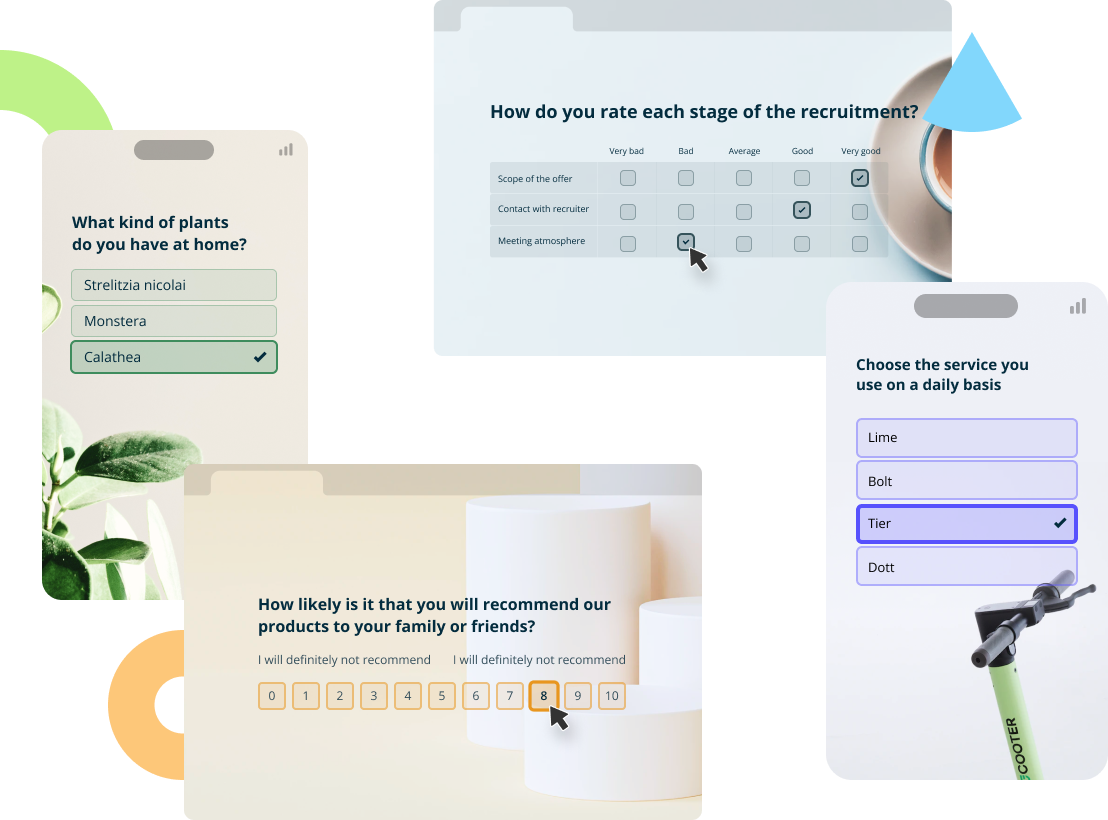Customer pain points aren’t just minor frustrations—they’re make-or-break moments that can shape how customers perceive your brand. Whether it’s a clunky checkout process, slow support, or unclear pricing, unresolved pain points cost you more than satisfaction—they cost you loyalty and revenue. In this article, we’ll dive into what pain points are, how to identify them, and actionable strategies to address them.
From optimizing the customer journey to leveraging AI chatbots and CX research, learn how to turn frustrations into opportunities to wow your customers and drive long-term success.
Pain Points. How Much They Cost You?
We’d like to start with some numbers, just to give you a brief understanding of how much pain points in business mean and how they can affect the health of an organization. Here’s why identifying and resolving them is crucial (all stats source: Emplifi):
- Companies that treat customer service as a growth driver (not a cost) see 3.5x more revenue growth.
- 86% of customers leave after just two poor experiences. Don’t let pain points push them away!
- Improving CX can lead to a 42% increase in retention, 33% higher satisfaction, and 32% more cross-selling opportunities.
- Nearly 49% of consumers switched brands last year due to poor experiences. Pain points cost more than you think.

The takeaway? Understanding your customers’ struggles isn’t optional—it’s the key to sustainable growth. Start solving pain points, and the results will follow! But first let’s find out…
… what Is a Pain Point?
In customer experience, a pain point is any frustration or obstacle a customer faces when interacting with a brand. Think of it as a moment where things don’t go as expected—whether it’s a confusing website, long support wait times, or hidden fees. These issues disrupt the customer journey and can leave a lasting negative impression.
Pain points – in customer’s point of view – typically fall into four buckets:
- Functional: Problems completing tasks, like a clunky checkout process.
- Emotional: Frustrations caused by feeling undervalued or mistrustful.
- Convenience: Inconveniences, like long queues or overly complex processes.
- Financial: Perceived lack of value or unexpected costs.
We’ll provide some examples in a minute.
Why It Matters
Ignoring pain points leads to churn and bad reviews. But addressing them? That’s where CX magic happens—boosting satisfaction, loyalty, and trust. Spotting and solving these issues is what sets exceptional brands apart.
In short, pain points are where CX can shine—or stumble. The choice is yours.
How Can We Identify Customer Pain Points?
Identifying customer pain points is essential for enhancing customer experience and driving business growth. To effectively uncover these challenges, follow the following steps:
Info from Sales Team and Support Team
Your frontline teams interact with customers daily, making them invaluable sources of information. Regularly debriefing these teams can reveal recurring issues and areas for improvement. For instance, Zendesk suggests asking questions like, “What problems do you run into most frequently?” and “What do customers complain about the most?” to gather actionable insights about specific pain points.
Feedback from Customers Themselves
Engaging customers directly provides firsthand insights into their experiences. Utilize open-ended questions in surveys to uncover specific pain points. For example, asking, “What features would you like to see in our product/service?” can highlight unmet needs. Customer surveys and feedback are effective strategies to uncover common customer pain points.
Customer Data Analysis
Data analytics can pinpoint where customers encounter obstacles. Key metrics to monitor include:
- Churn Rate: A high churn rate may indicate unresolved issues driving customers away.
- Conversion Rates: Low conversion rates can signal friction in the sales process.
- Cart Abandonment: High abandonment rates often point to problems in the checkout experience.
- Average Time on Site: Short visit durations might suggest that customers aren’t finding what they need.
Regularly analyzing these metrics helps identify and address pain points, leading to improved customer satisfaction and loyalty. You can effectively pinpoint and address customer pain points by integrating insights from your teams, direct customer feedback, and data analysis, improving the overall customer experience.
Customer Exit Survey Template
Each customer’s success is your success. Therefore, understanding why clients leave is crucial. A customer exit interview can provide valuable feedback that can help businesses to identify areas for improvement and make data-driven decisions.
Customer Exit Survey Template
Each customer’s success is your success. Therefore, understanding why clients leave is crucial. A customer exit interview can provide valuable feedback that can help businesses to identify areas for improvement and make data-driven decisions.
Pain Points Examples
Every customer journey is unique, but pain points often fall into predictable categories. Addressing these effectively can make or break the customer experience. Let’s dive deeper into five key types of pain points with examples and insights.
Financial Pain Points
Sometimes, customers may feel that the value of a product or service does not warrant its price, especially if they encounter unexpected costs that undermine trust.
Examples:
1. Confusing Pricing: Customers abandon a service when pricing tiers are unclear or riddled with fine print. Imagine signing up for a subscription service only to realize you’ve been charged extra for features you thought were included.
2. Unexpected Costs: Hidden fees during checkout, like extra shipping charges or service fees, can frustrate customers and lead to cart abandonment.
How to Solve It:
Be transparent and upfront about costs. Use tools like pricing calculators or provide clear breakdowns in billing. Transparency builds trust and reduces perceived financial risk.
Process Pain Points
These occur when a product, service, or interaction is unnecessarily complex or time-consuming. Modern customers value convenience and simplicity, and friction here can quickly lead to frustration.
Examples:
1. Lengthy Checkout Process: A five-step checkout requiring users to create an account before purchase can drive them to competitors.
2. Confusing Onboarding: New customers often feel overwhelmed if your onboarding lacks clear guidance, tutorials, or intuitive steps.
How to Solve It:
Audit every process your customers interact with and aim for simplicity. Use UX testing to streamline navigation, reduce steps, and create a frictionless experience. Make FAQs, tutorials, and live chat readily available.
Support Pain Points
When clients struggle to get help from the customer service team, they feel undervalued. Poor support experiences can erode loyalty faster than almost any other type of pain point.
Examples:
1. Long Response Times: Waiting on hold for 30 minutes to resolve a simple issue sends a clear signal that your time is more valuable than the customer’s.
2. Repetitive Processes: Customers become frustrated when they need to explain their issue multiple times because support agents lack context or history of past interactions.
How to Solve It:
Invest in support tools like CRM systems that provide agents with a full customer history. Offer multiple channels for assistance—phone, email, chat, and self-service portals. Make response time a priority; even automated acknowledgment goes a long way.
Customer Effort Score Survey
Satisfied customers are likelier to remain loyal and promote your brand through word-of-mouth. Many businesses turn to metrics like the Customer Effort Score (CES) to gauge customer satisfaction effectively.
Customer Effort Score Survey
Satisfied customers are likelier to remain loyal and promote your brand through word-of-mouth. Many businesses turn to metrics like the Customer Effort Score (CES) to gauge customer satisfaction effectively.
Productivity Pain Points
These pain points hit when customers feel their time and effort are wasted. They’re common in B2B environments where products and services are meant to save time—but end up doing the opposite.
Examples:
1. Inefficient Tools: A project management tool that requires multiple manual updates (customer frustration guaranteed) rather than automating tasks.
2. Lack of Integrations: A business solution that doesn’t connect with other software forces users to export and re-enter data manually, doubling their workload.
How to Solve It:
Identify where inefficiencies occur by gathering feedback from users. Offer integrations with popular tools your customers already use, and prioritize automation to streamline workflows.
Business Pain Points
Such challenges are specific to B2B customers and often relate to operational issues, scalability, or compliance requirements. Addressing these pain points can significantly enhance customers’ ability to operate their business efficiently.
Examples:
1. Scalability Issues: A small business CRM that works well for teams of 10 but becomes too expensive or lacks functionality as the team grows.
2. Compliance Risks: A service that doesn’t adhere to regulatory standards, putting the customer’s operations—or their own customers—at risk.
How to Solve It:
Understand the industries you serve and their specific challenges. Offer tiered solutions that scale with the customer’s needs and ensure your product or service meets relevant compliance requirements.
Understanding these pain points and addressing them isn’t just about solving problems—it’s about building trust and creating experiences that make customers, both current and prospective, feel valued. By empathizing with their frustrations and focusing on genuine customer pain points, you can proactively eliminate obstacles and transform challenges into opportunities to wow your audience. This approach not only strengthens loyalty among existing customers but also enhances your appeal to potential ones.
Make it your mission to identify these pain points early and often. Your customers—and your bottom line—will thank you.
NPS Survey Template
The Net Promoter Score (NPS) is a world-renowned methodology and one of the best business tools for researching customer loyalty. You will draw remarkably valuable conclusions with such simple to collect and valuable feedback.
NPS Survey Template
The Net Promoter Score (NPS) is a world-renowned methodology and one of the best business tools for researching customer loyalty. You will draw remarkably valuable conclusions with such simple to collect and valuable feedback.
How to address customer pain points
Addressing customer pain points requires a proactive approach and a commitment to delivering exceptional customer experiences. Here are 4 actionable strategies to tackle common issues and build stronger customer relationships:
1. Optimize the Customer Journey
A seamless customer journey is key to minimizing friction and frustration. Start by mapping the entire journey—from initial awareness to post-purchase—to identify where pain points occur.
Key Actions:
- Streamline Processes: Simplify steps like account creation, checkout, or onboarding. For example, reducing the steps in a checkout process can drastically lower cart abandonment rates.
- Personalize Experiences: Use data to tailor the journey to customer preferences, making interactions feel relevant and valued.
- Monitor Real-Time Feedback: Tools like heatmaps or session recordings help pinpoint areas where customers struggle, such as confusing navigation or slow-loading pages.
CX Tip: Conduct Customer Journey Analytics to measure how satisfied customers are at each touchpoint. Use tools like Customer Satisfaction Score (CSAT – to measure customer expectations and satisfaction) Net Promoter Score (NPS – to measure customer loyalty) or Customer Effort Score (CES – to measure customer effort) to identify pain points that need improvement.
2. Create Helpful Documentation (FAQs and Knowledge Bases)
Empowering customers with self-service options can resolve many processes or support pain points. A well-organized FAQ or knowledge base allows customers to find answers quickly without needing to contact support.
Key Actions:
- Identify Common Questions: Use input from support teams or customer surveys to address recurring issues.
- Keep It Updated: Ensure documentation evolves with product or service changes.
- Organize Clearly: Structure content with categories, search functionality, and a logical flow to make information easy to find.
CX Tip: Regularly review FAQ usage data to see which questions are most searched for—and adjust your documentation accordingly for current and prospective customers.

3. Implement AI-Powered Help Desks and Chatbots
Artificial intelligence (AI) can improve support experiences by providing instant, 24/7 assistance. Chatbots and help desk tools can handle common queries, allowing support teams to focus on complex issues.
Key Benefits:
- Faster Responses: Customers don’t need to wait in queues for simple requests.
- Consistency: AI chatbots provide uniform answers, reducing the risk of miscommunication.
- Cost-Effectiveness: AI reduces the workload on support teams while maintaining high service levels.
Example Use Cases:
- A chatbot answering FAQs or guiding customers through troubleshooting steps.
- Proactive chatbots offering help when they detect inactivity during the checkout process.
CX Tip: Use AI tools to analyze chatbot interactions for recurring pain points. This insight can help you improve both automated and human-assisted support.
4. Monitor CX Through Targeted Research
Measuring customer satisfaction is critical to addressing pain points effectively. CX research provides insights into how customers feel at various stages of their journey, helping you take targeted action.
Key Methods:
- Surveys: Use tools like CSAT (Customer Satisfaction) surveys immediately after key interactions (e.g., post-purchase or after a support ticket is closed).
- Voice of the Customer (VoC): Analyze open-ended feedback from surveys or social media to uncover hidden pain points.
- Journey-Specific Metrics:
- NPS (Net Promoter Score): Measures loyalty by asking if customers would recommend your brand.
- CES (Customer Effort Score): Evaluates how easy it is for customers to complete a task, such as resolving an issue.
CX Tip: Combine quantitative metrics (e.g., NPS) with qualitative insights from customer interviews or focus groups to get a full picture of their experiences.
Addressing customer pain points starts with understanding their journey, empowering them with tools for self-help, and ensuring fast and effective support when needed. Layer this with continuous CX research, and you’ll not only resolve pain points but also anticipate and prevent future ones—delivering an experience that keeps customers loyal and delighted.
Need help identifying pain points in your organization? We’d be happy to help.




